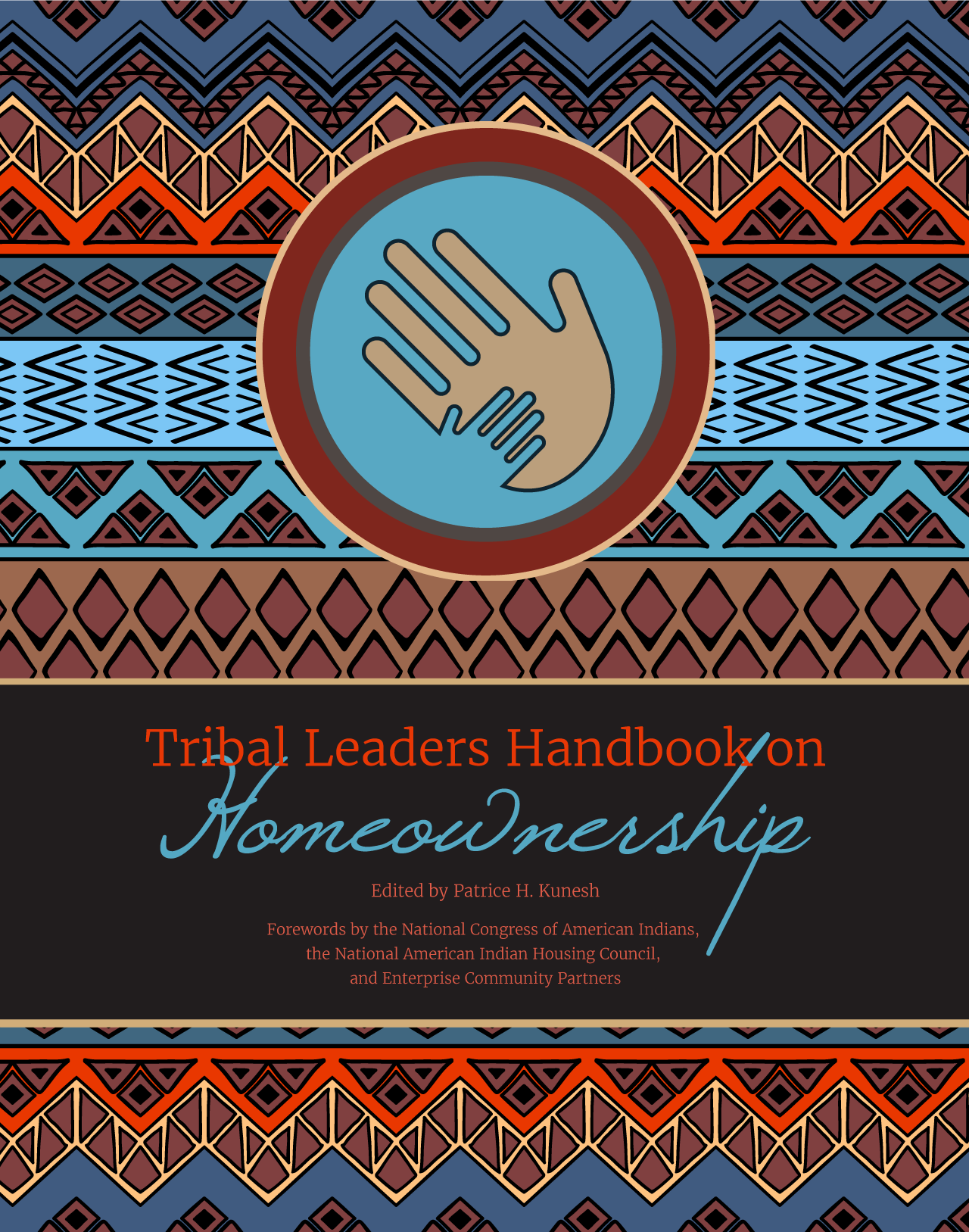The National Congress of American Indians
The ability of a tribal nation to fully exercise its sovereignty in order to achieve social, cultural, and economic prosperity depends to a large degree on the ability of the individuals and families who make up that nation to achieve self-sufficiency. Homeownership represents a vital pathway in that pursuit, yet across Indian Country it is underutilized, poorly resourced, and not fully understood.
With this Handbook, the Center for Indian Country Development enhances tribal nations’ understanding of the opportunities for homeownership by their people – and empowers them to seed those opportunities. Presenting cutting-edge data, tribal best practices, leading models, and useful tools, the handbook presents tribal leaders and key decision makers with a suite of relevant resources they can use to forge comprehensive, tribal approaches capable of meeting the homeownership needs of their people not just today, but for years to come. It also articulates the central roles that lenders and community development and housing advocacy organizations can and should play in this formative process, and the critical need for tribal nations to fully engage these partners every step of the way.
With Native people being one of the fastest-growing populations in the country, removing the many barriers that keep them from owning a home grows more urgent by the day. Given this reality, it is incumbent upon tribal leaders and key decision makers to plan and act now to remove those barriers. When they succeed in doing so, they not only support the building of personal and familial wealth, they strengthen culture, community, and economy by enabling more tribal citizens to participate by working and living at home in tribal communities. This Handbook shortens the learning curve for tribal nations about what works and what doesn’t, and it provides them proven blueprints for strategic action.
—Jacqueline Pata, Executive Director, National Congress of American Indians
National American Indian Housing Council
For many generations, traditional Native communities worked together to ensure that each family had a safe home of their own. Today, quality, affordable housing opportunities are far too scarce in Indian Country. A 2017 report by the Department of Housing and Urban Development found that 68,000 new units are needed to alleviate issues of overcrowded and substandard homes in tribal communities, and may well underestimate the true need. Inadequate housing contributes to a number of the problems facing our communities. Lack of housing options also impacts the health and safety of our Native communities, particularly for the young and elderly. Creating new homeownership opportunities will be a vital component as we work to address this housing crisis in Indian Country.
The Tribal Leaders Handbook on Homeownership is designed to take a community wide approach to address homeownership in the present day. Rather than thinking of homeownership as a single mortgage transaction or single construction job, communities are learning that a comprehensive approach to community development can solve not only our housing shortage, but also do so in a way that revives and sustains tribal economies.
This comprehensive approach means everyone must work together – from the individual learning the importance of building good credit, to the tribal housing counselor guiding the way through the maze of homeownership programs and mortgage options, to the tribal leader who knows that developing the legal and physical infrastructure in their community creates greater homeownership and economic development opportunities. These new homeownership opportunities create jobs, improve education and health outcomes of the community, and help recruit professionals to move to the communities. All of this can drive further development and sustained economic progress across Indian Country.
Nonetheless, addressing the dire housing needs in Indian Country – really tackling the systemic challenges to developing trust lands and offering better lending options – will require more. The United States Congress, federal agencies, and our partners in the housing and banking industries all have an essential part to play to create real housing opportunities for our Nation’s first nations.
I appreciate the work of the National Native Homeownership Coalition, the Center for Indian Country Development, and the Federal Reserve Bank of Minneapolis in developing this Handbook. Its comprehensive approach will serve our tribal communities well as we strive to provide greater housing and homeownership opportunities for Native peoples across the country.
— Tony Walters, Executive Director, National American Indian Housing Council
Hawaiian Community Assets
Homeownership in native communities is about more than personal wealth. It is about perpetuation of culture, preparing future generations, and building collective wealth. The Tribal Leaders Handbook on Homeownership is a groundbreaking publication that provides tribal housing authorities with tools for understanding land and finance requirements for homeownership and creating sustainable housing programs – all rooted in a native way of thinking that promotes collective wealth over personal wealth and gain.
— Jeff Gilbreath, Executive Director, Hawaiian Community Assets
Enterprise Community Partners
Enterprise Community Partners has an ambitious vision: that one day, every person will have an affordable home in a vibrant community, filled with promise and the opportunity for a good life. Since 1982, our work in communities has been grounded by the belief that safe, affordable housing is critical to helping low-income people move out of poverty. We strive to connect housing to communities of opportunity, where residents have access to a good education, an affordable place to live, a job, and quality health care.
The need for this comprehensive approach to housing and community development is evident on reservations and pueblos across the country. Native Americans living on tribal lands face extreme hardships, and as a result, tens of thousands of Native American families are housing insecure—burdened by high housing costs, doubled-up in poor quality homes, or struggling with homelessness. Added to that, much of the existing housing is located away from centers of employment, education, and cultural activities, further compounding the challenges Native Americans face.
For more than 20 years, Enterprise has worked with tribal governments to develop culturally appropriate affordable housing options for Native Americans. During that time, we have invested more than $100 million in tribal housing programs through grants, loans, tax credit investments, technical assistance and training. We have also established critical partnerships, including with the Center for Indian Country Development at the Federal Reserve Bank in Minneapolis. CICD’s work has brought a strong focus to improving homeownership and asset building strategies for Native Americans, and is founded on our shared belief that homeownership provides financial security and a pathway out of poverty that can extend for generations.
This manual, and our partnership with CICD, is an effort to support the work of Tribal leadership as they develop, launch and administer homeownership programs. It provides broad guidance on how to get started, and case studies of programs that have worked across the country. It is intended to be accompanied by individualized technical assistance that will help you navigate the resources and challenges ahead.
As you read through this guide and access the materials on-line, we are hopeful that it will stimulate your creativity and inspire your own homeownership program. If it does, we look forward to partnering with you to bring that program to life.
—Terri Ludwig, Chief Executive Officer, Enterprise Community Partners


